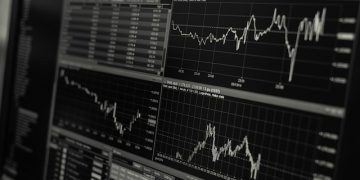(Bloomberg) — It’s a matter of pure conjecture, but the coming week may well be the moment when investors see the beginning of an end to the largess that helped propel emerging markets to unprecedented highs.
Though few expect a sudden turn of events, Russia’s interest-rate decision and the release of Brazilian inflation data could help settle a question that’s burgeoning in the minds of investors. Namely, how will markets in the developing world behave when central bankers tighten the policy screws?
“Any sign of a change to tighter policies, for example in China, Brazil or Mexico, could lead to a broader correction of valuations across emerging-market debt,” said Zsolt Papp, a money manager at JPMorgan Asset Management in London. “For now, the expectation is that most emerging-market central banks will maintain accommodative monetary policies.”
Developing-nation dollar bonds had their biggest weekly advance this year in the five days through Friday after weaker-than-forecast U.S. jobs data bolstered the case for President Joe Biden’s $1.9 trillion relief package. An index of emerging-market equities clocked up its best week since November.
The gains were all the more impressive because they came as U.S. Treasury yields climbed to their highest since the early days of the pandemic, signaling a growing concern that the stimulus measures will act as an inflation trigger. A Bloomberg study conducted in January found developing-world currencies typically sell-off when yields jump and are especially vulnerable when they’re historically low.
For Lutz Roehmeyer, the chief investment officer at Capitulum Asset Management GmbH in Berlin, an increase in Treasury yields is a welcome indicator of economic revival, which is of greater concern to investors.
“Rising U.S. yields are a good sign of the economic recovery from the Covid crisis,” he said. “The growth effect for emerging markets should be much more positive than the cost of higher interest rates.”
While Brazil’s inflation reading and Russia’s rate decision will be closely followed this week, there’s little pressure for most countries to tighten policy now. Average inflation in the developing economies sat at an all-time low in the fourth quarter.
Underscoring investor optimism, a measure of implied volatility for currencies fell on Friday to the lowest since July. An index of expected price swings in equities was at a seven-week low.
Whither Rates?
The Bank of Russia’s policy rate decision is scheduled for Friday. While a hold is the predicted outcome, inflation pressure is building and the focus will be on whether guidance in the statement or from Governor Elvira Nabiullina’s press conference hints at the possibility of future tighteningSo far, there’s little in the derivatives market to suggest it’s imminent with forward rate agreements showing barely any change expected over the coming three monthsPolicy makers in Mexico are expected to trim the key borrowing rate by a quarter-point to 4% on Thursday, according to economists surveyed by BloombergA reading of January CPI on Tuesday and December industrial production early Thursday will be watched for clues on the central bank’s path
In Brazil, traders will watch inflation figures on Tuesday as they bet on the timing and pace of monetary normalization, according to Bloomberg Economics
A reading of December retail sales data on Wednesday, meantime, will reflect the last of emergency cash handoutsEconomic activity for the same month probably rose from both a month and a year earlier, economists surveyed by Bloomberg sayPeru’s central bank is slated to hold its key interest rate at an all-time low of 0.25% on Thursday, the lowest in Latin AmericaIn Argentina, consumer price inflation probably hovered near 4% in January, a figure that is unlikely to trigger any policy reaction, according to Bloomberg EconomicsA reading of Chilean consumer price inflation for January will probably show an uptick, driven by energy prices
Bangko Sentral ng Pilipinas is expected by unanimous consensus to leave rates on hold on Thursday
Governor Benjamin Diokno has said the monetary authority is due for a “long pause” through at least through the first half of 2021BSP has signaled it could lower banks’ reserve requirement ratio — though still-abundant liquidity and soaring January CPI may also limit the scope for such a move in the near term, according to Bloomberg EconomicsRead more: Philippines Diokno Says CPI Uptick Temporary, No Need to Act Peso has been mired around 48 per dollar since the end of November. The increase in the central bank’s foreign-exchange reserves — even taking into account valuation effects and sovereign bond issuance — suggests intervention is responsible for the prolonged stallChina’s January price data are expected to slip back into deflation for CPI in year-over-year terms, while PPI is expected to rise into positive territory in the report due WednesdayThe drop in CPI would reflect sluggish domestic demand pressure following the recent tightening of virus-containment measures in some northern provinces. A high base for food prices may have led to a year-on-year decline in the food componentOn the other hand, a rebound in local commodity prices probably gave the PPI a boostJanuary aggregate-financing and loans data are due during the week. The numbers likely accelerated sharply in January from December — largely reflecting seasonalityThe yuan was the second-worst performing currency in emerging Asia last week as the authorities’ ongoing exchange rate defiance continuedIndia’s January CPI probably remained within the central bank’s target rangeThe Reserve Bank of India on Friday kept interest rates on hold at 4% for a fourth straight meeting, days after Prime Minister Narendra Modi’s government unveiled an expansionary budget that could stoke inflationary pressures in the coming monthsBonds fell as RBI’s liquidity pledge fell short of expectationsVolatile inflation data has caused headaches for Hungary’s central bank and the forint. Maybe less so this time — consumer prices probably rose an annual 2.7% in January, unchanged from DecemberPolicy makers have adopted a more cautious stance and have warned that consumer-price growth may temporarily spike above their target bandThe forint has strengthened against the euro this yearGhana’s January inflation probably remained close to the 10% top of the central bank’s target range
Ramaphosa Speaks
President Cyril Ramaphosa will present his annual state-of-the-nation address to lawmakers on ThursdayInvestors want reassurance that the government has a handle on the Covid-19 pandemic and vaccine rollout, and more clarity on plans to stimulate economic growth and curb public debtThey’ll also be looking for clarity on how the government plans to deal with ailing state-owned companies including Eskom, the national electricity company, and South African AirwaysSouth Africa faces the most elevated debt risk of the countries that Bloomberg Economics has examinedIts debt-to-GDP ratio is set to rise sharply and the interest-to-GDP ratio is expected to increase above 5% this year and top 11% in 2030That would be higher than in some recent cases of sovereign defaults such as Argentina (4% in 2001 and 2019) and Lebanon (about 10% in 2019)South Africa’s five-year credit-default swap premium has more than halved to about 200 basis points since the March rout
Politics and Protests
Investors will be focused on Ecuador’s bond market after the first round of a high-stakes presidential vote on SundayA victory by market-friendly Guillermo Lasso will probably be well received, while a win for Andres Arauz may drag down the notes as many worry he will turn his back on deals inked last year with bondholders and the International Monetary FundWhy Ecuador’s Sunday Vote Matters for the Bond Market: QuickTakeMyanmar’s shares and currency may come under further pressure following the nation’s biggest protests in more than a decade on Sunday. Tens of thousands of demonstrators took to the streets in several cities calling for the release of detained civilian leader Aung San Suu Kyi
Other Asian Data & Events
Malaysian December industrial production will be released on Monday and is expected to have contracted in year-over-year termsFourth-quarter GDP is due on Thursday and is expected to shrink at a more rapid year-over-year rate than the previous quarterThe improvement in the performance of the traded goods sector in Malaysia is unlikely to be sufficient to offset weaker private consumption, according to Bloomberg Economics. High-frequency data through Dec. 31 suggest significant slippage in domestic economic activity in the fourth quarter from the third quarterCurrent-account data for the fourth quarter are also due on the same day and should register another sizable surplusThe ringgit was the worst performer among emerging Asian currencies last week with Malaysia’s Covid cases on the rise and a relatively severe lockdown in place — the most stringent in Asia, according to Goldman Sachs Group Inc.Taiwan January trade figures on Monday are expected to see a jump in exports and a chunky $5.1 billion surplus, according to economists surveyed by BloombergThe Taiwan dollar remained under appreciation pressure last week amid continued equity inflowsThe central bank said it plans to tighten rules on local companies’ foreign exchange transactions in the latest move to curb speculationSouth Korea’s unemployment data for January are due WednesdayBloomberg Economics forecasts the seasonally-adjusted jobless rate at 4.8% in January. The services sector likely remained under pressure from virus restrictionsThe Korean won weakened 0.5% last week, after depreciating on position-adjustment and foreign sales of equities in JanuaryIndia’s December industrial production is due on FridayBloomberg Economics expects a much-better-than-consensus outcome as payback for fewer working days in NovemberPoland, whose currency has outperformed the majority of peers this year, will publish preliminary fourth-quarter GDP data on Friday which will probably show a deeper contraction in the economColombian retail sales for December, to be released on Friday, will be monitored by investors for clues on a recovery in the South American nation
For more articles like this, please visit us at bloomberg.com
Subscribe now to stay ahead with the most trusted business news source.
©2021 Bloomberg L.P.




